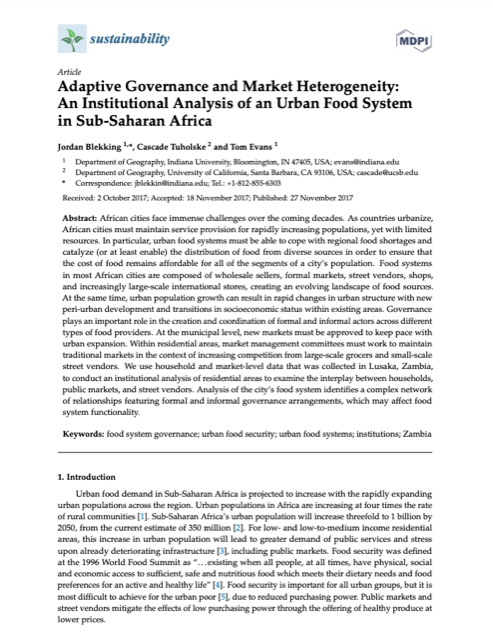Adaptive Governance and Market Heterogeneity: An Institutional Analysis of an Urban Food System in Sub-Saharan Africa

Abstract: African cities face immense challenges over the coming decades. As countries urbanize, African cities must maintain service provision for rapidly increasing populations, yet with limited resources. In particular, urban food systems must be able to cope with regional food shortages and catalyze (or at least enable) the distribution of food from diverse sources in order to ensure that the cost of food remains affordable for all of the segments of a city’s population. Food systems in most African cities are composed of wholesale sellers, formal markets, street vendors, shops, and increasingly large-scale international stores, creating an evolving landscape of food sources. At the same time, urban population growth can result in rapid changes in urban structure with new peri-urban development and transitions in socioeconomic status within existing areas. Governance plays an important role in the creation and coordination of formal and informal actors across different types of food providers. At the municipal level, new markets must be approved to keep pace with urban expansion. Within residential areas, market management committees must work to maintain traditional markets in the context of increasing competition from large-scale grocers and small-scale street vendors. We use household and market-level data that was collected in Lusaka, Zambia, to conduct an institutional analysis of residential areas to examine the interplay between households, public markets, and street vendors. Analysis of the city’s food system identifies a complex network of relationships featuring formal and informal governance arrangements, which may affect food system functionality.
